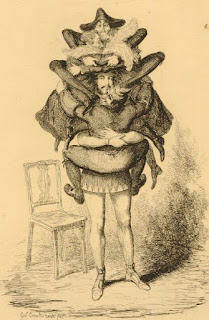Luigi Riva - an Azzurri great
Italy's record goalscorer and hero of Cagliari
Luigi 'Gigi' Riva, who was born on this day in 1944, is widely regarded as one of the finest strikers in the history of Italian football. Despite playing in an era when football in Italy was notoriously defensive, he scored more than 200 goals in a 16-year club career, 156 of them in Serie A for Cagliari, with whom he won the Scudetto (shield) as Italian League champions in 1970. Nicknamed 'Rombo di tuono' - thunderclap - by the football writer Gianni Brera, Riva is also the all-time leading goalscorer for the Italian national team with 35 goals, his record having stood since 1974. After his playing career, Riva spent 23 years as part of the management team for the Azzurri and was a key member of the backroom staff when Italy won the World Cup for a fourth time in 2006. Born in Lombardy, not far from Lake Maggiore, Riva spent virtually his whole football career with Cagliari and made his home in Sardinia. The 1969-70 title is the only championship in the club's history and Riva, who scored 21 goals in the title-winning season, is as revered on the island as Diego Maradona is in Naples. Although he came from a loving home in the small town of Leggiuno, just a few kilometres inland from the shores of Lake Maggiore, Riva had a tough upbringing. Read more…
__________________________________________________________
Niccolò Machiavelli - statesman and diplomat
Enforced retirement gives public servant time to write about his ruthless ideas
Statesman and diplomat Niccolò Machiavelli, whose name has become synonymous with the words ‘cunning’ and ‘duplicity’, was dismissed from office in Florence on this day in 1512 by a written decree issued by the Medici rulers. Machiavelli was forced to withdraw from public life and retired to his home in the Chianti region of Tuscany, where he wrote his most famous work, The Prince, which was to give the world the political idea of ‘the ends justify the means’. Had the Medici not distrusted him, Machiavelli might have continued to serve in Florence as a diplomat and military leader. He may never have passed on to mankind the ideas he had learnt from his work during the turbulent period in Italian history when popes and other European countries were battling against Italy’s city states for power. In The Prince he was able to write with first-hand knowledge about the methods he had seen used by Cesare Borgia and his father Pope Alexander V1 to take over large parts of central Italy. The ideas he put forward were to make the word ‘machiavellian’ a regularly used pejorative adjective and the phrase ‘Old Nick’ to become an English term for the devil. Read more…
___________________________________________________________
Gaspare Tagliacozzi - surgeon
Professor invented rhinoplasty procedure
Pioneering plastic surgeon Gaspare Tagliacozzi died on this day in 1599 in Bologna. During his career, Tagliacozzi had developed what became known as ‘the Italian method’ for nasal reconstruction. He improved on the procedure that had been carried out by the 15th century Sicilian surgeons, Gustavo Branca, and his son, Antonio. Tagliacozzi wrote a book, De Curtorum Chirugia per Insitionem - On the Surgery of Mutilation by Grafting - which described in great detail the procedures carried out in the past to repair noses amputated during battle. Surgeons who came after him credit him with single-handedly revolutionising the procedure and inventing what is today referred to as a rhinoplasty procedure. Tagliacozzi was born in Bologna in 1545. He studied medicine, natural sciences and anatomy at the University of Bologna, gaining a degree in philosophy and medicine by the age of 24. After he was appointed professor of surgery and professor of anatomy at the University he taught at the Archiginnasio, famous for its anatomical theatre, where he procured the bodies of executed prisoners to use in dissections. Read more…
____________________________________________________________
Feast day of Ercolano – patron saint of Perugia
Bishop was martyred after trying to save city
Today sees the Umbrian city of Perugia celebrate one of the two annual feast days of one of its patron saint, Ercolano, who according to legend was martyred on this day in 549 at the hands of the Ostrogoths, who ruled much of Italy at that time and had placed the city under siege. Herculanus, as he is also known, was the Bishop of Perugia and as such was charged with trying to bring comfort to his flock in the face of inevitable capture by the Ostrogoths, the tribe, thought to have originated in Scandinavia, which had swept into Italy at the beginning of the sixth century. They had a large, well-equipped army – more powerful than the army Perugia possessed, although it had enough soldiers to deter an advance – and the Ostrogoth leader, Totila, was prepared to wait outside the walls of the city for as long as it would take to starve the population into surrender. Perugia’s authorities did all they could to prolong the siege, rationing supplies and ensuring none were wasted, but days passed into months and years and there was no evidence that the amply fed army at the gates of the city was planning to move on. Read more…

















